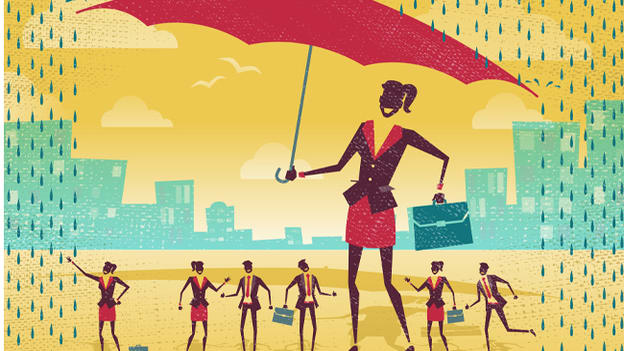New rules for new world: Humanizing workplaces

For the past few years, digitalization has been a key driver for growth and transformation of businesses. The spread of Covid-19, and the lockdowns instituted to contain the infections, has expedited this process. As a result, the entire focus and pressure has shifted on the CIOs to develop new digital strategies that meet the rising demand. On the other hand, company leaders and their human resource departments are leveraging human potential.
The concept of future-proof workplaces is not new. Companies across the world have always been preparing for it. Employees, on the other hand, have always feared that technological automation and augmentation may take up their positions. But this is not the case; with every advancement, workers pivot between professions with significantly different skill sets and navigate mid-career job transitions accompanied by substantial reskilling and upskilling. These pivots may not seem much from an employee's perspective, but they are equally crucial for the business's success, as they are to the employee's prosperity. The absence of such pivots or reskilling or upskilling may lead to the scarcity of skilled workforce in the industry, resulting in a productivity lag.
A survey conducted by WeForum on Future of Jobs (October 2020) showed that the percentage of adoption of new technologies in the past two years had increased sharply. Cloud Computing, Big Data and E-commerce remain high priorities, following a trend in previous years, it stated. These new technologies drive growth across various industries, eventually pumping the demand for new job roles and skill sets. History has proven that technological advancements have displaced a few tasks performed by humans to machines, but they have also created opportunities for the workforce to learn new occupations and skill sets. After every developmental cycle, companies tend to restructure their policies, workforce as per the latest technologies.
Other than pushing digitalization across industries, the pandemic has also resulted in a significant scale shift in the working environment of the businesses, led by a surge in remote-working or work-from-home setups. This change has also brought considerable well-being challenges, as workers have struggled to adopt new ways of working in such a short span of time.
In the context of the COVID-19 pandemic, the workforce across the globe has been divided into segments. Group A includes the essential workers like health workers, caregivers, agriculture workers, delivery personnel, manufacturers and local food shop workers. Similarly, Group B consists of the corporate employees who have the option of remote working or work-from-home. Both the workforce groups are going through a shift in their workplaces, which now requires new reskilling and resilience. When it comes to the essential workers, physical well-being and safety remains paramount, while the remote workers face psychological well-being and mental health challenges due to the vacuum created by an isolated environment and extensive changes in working practices. For most remote workforce, the workplace is now not much a physical location but a digital space. This group of workers has learnt to conjure up an office from their bedroom, study, balcony, working via laptops, tablets and smartphones.
A recent survey conducted by Space Matrix showed that 85% of employees want to get back to their physical workplace, but with the flexibility to switch between the two options. Industries that can offer a completely remote working model are Information Technologies and Insurance industries, where most of their workforce have the facility of working from home. Other industries like Finance, Legal and Business Services can offer a hybrid system. In a hybrid model, responsibilities are divided equally among the workforce, depending on their strengths. Whereas in the traditional model, the distribution relies more on the location of the employee. The primary objective to introduce a hybrid model is to consider the well-being of the staff.
On leveraging human potential, companies will need to shift their attention from areas of decline to areas of growth. They will have to take calls for upgrading their workforce's capabilities and skills in line with the emerging demands of the market. This up-gradation of skill sets can be provided directly by the employers, or it can be in the form of a joint effort of private and public sectors. To realize the value of such investments, both businesses and governments will need to formulate such policies and practices that the workers can prosper based on merits. Such practices will help companies avoid misallocating their staff because of their race, caste or gender. In addition to this, it will also strengthen their connection with the workforce.
The pandemic has highlighted both fragility and resilience in our society. It also showed that a majority of the firms have the ability to survive any crisis. A collaboration between firms and governments can generate even more innovative ideas that address any unforeseeable circumstances.
In addition to this, the route to unlocking the workforce's potential is to employ a strategy that paves the way for a better, more productive and rewarding future of work. Such strategies usually focus on rewarding features, i.e. releasing increments, promotions and giving employees a sense of growth and achievement. On the other hand, it also promotes a sense of belonging and understanding between the employer and the workforce.
The future of work cannot come without a balance between growth and development. If the climate is at risk, businesses are at risk, too. Several multinational companies have promised to formulate better and healthier environmental policies, while others have made commitments to cut their carbon emissions by 50% in all their shipments. In line with such initiatives, some other firms have digitized their majority of operations to reduce their impact on the planet.
The COVID-19 pandemic has provided a much-needed reboot to the system. Some businesses and employees have easily adapted to the change, while others are in the process of exploring the potential of this opportunity.














